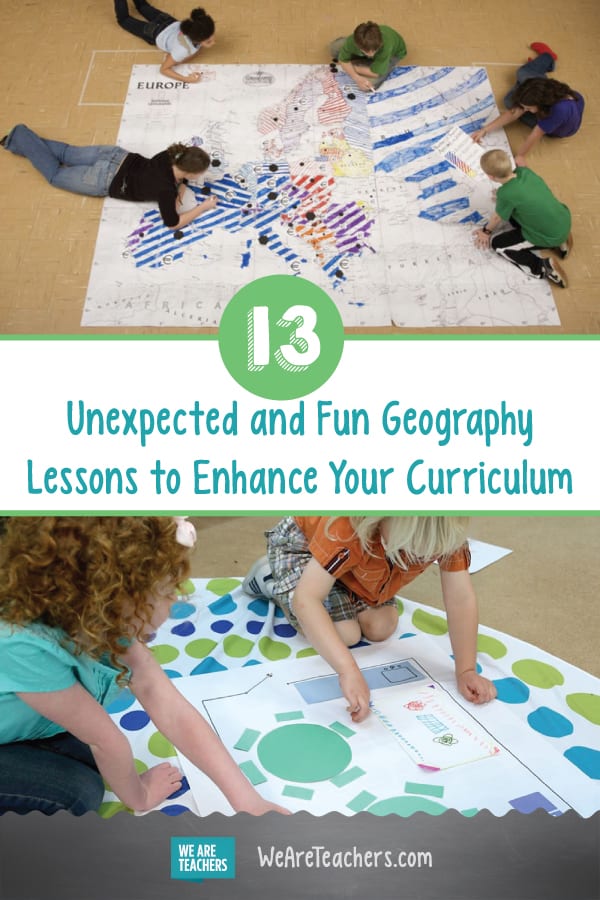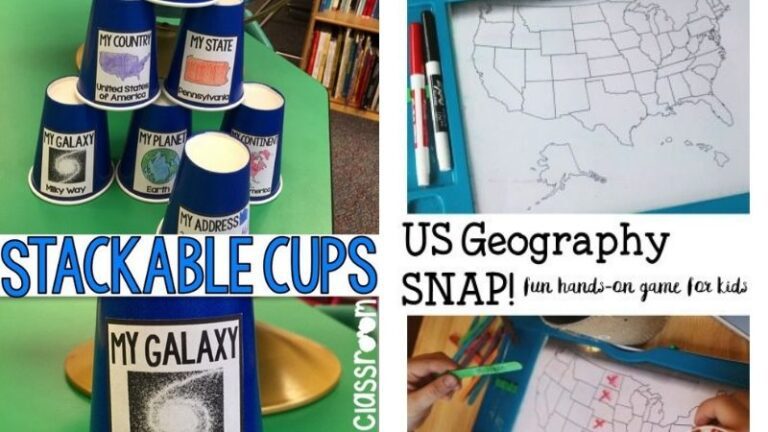With the right geography lesson, students can travel around the world without ever leaving the classroom. Teachers of any grade and subject can incorporate geography into their curriculum to help students gain a global perspective and understand the world around them. From students learning to locate different cities, states, and countries on a map to understanding time zones and where their clothing comes from, we asked teachers to share their favorite tips and fun geography lessons to inspire students’ curiosity about the world. Here’s what they had to say:
1. Hold a mock geography bee.
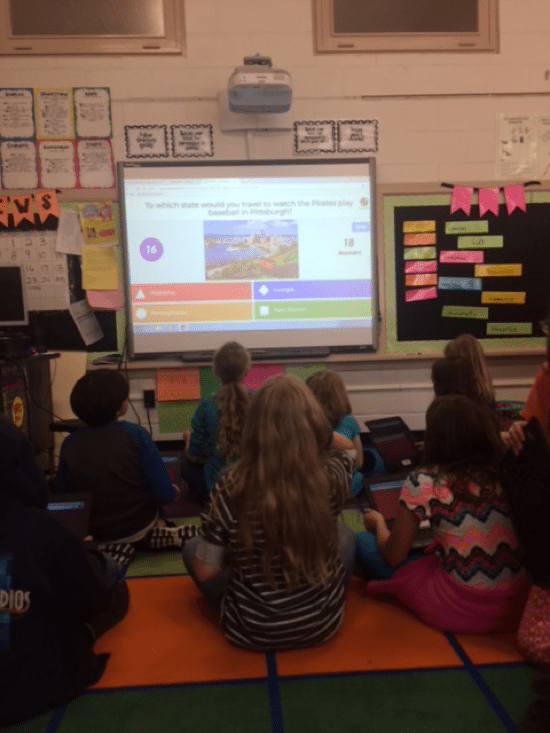
Ashley Peterson’s fourth graders get ready for the GeoBee using Kahoot!
Fourth graders in Ashley Peterson’s class often play Kahoot! before dismissal. She recently held a mock geography bee using Kahoot! to teach geography concepts and help kids prep for the National Geographic GeoBee. National Geographic has multiple geography-themed Kahoot! games available, with topics including State Stats, Source to Sea, and The First Americans. Learn how to use Kahoot! for a mock geography bee in your classroom.
2. Explore the world through pen pals.
Set up a pen pal exchange with a teacher in another city or country to help kids practice their writing skills while gaining a global perspective. Bring the experience to life by ending the year with a Skype chat where kids can finally “meet” their pen pals.
3. Put up a wall of clocks.
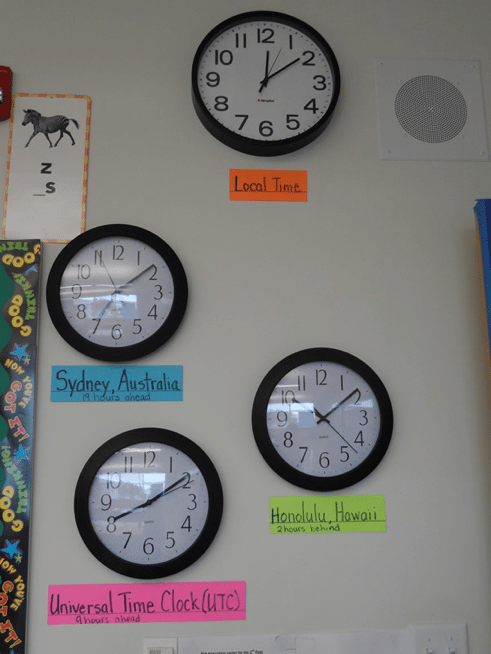
Source: Sharon Angal, Quatama Elementary
Help students start to understand the geography of time zones by putting up a wall of clocks in your classroom. Set one clock to universal time and label it Greenwich, England. Choose a variety of major cities throughout the US and the world to label the other clocks and set them accordingly. Point out the clocks at different times throughout the school day. For example, in the morning when students in your class are just starting school, talk about what students in other time zones might be doing. You can also use the clocks as a starting point to explain how longitude and time zones are related.
4. Travel with technology.
Technology teacher Melinda Klecker teaches fun geography lessons by having her students design travel brochures. She asks students to select different states. They each research their chosen state and two cities in it to include in the brochure. It’s a great way to incorporate writing, technology, graphic design, and geography into a single project.
5. Put the world into perspective with Google Earth.
Anytime fourth grade teacher Julia McIntyre talks about her personal travels, she uses Google Earth to show students the distance between their school and her destination. “It really puts it into perspective for them,” she says. Now you can also use Google Earth to follow National Geographic Explorers, including those working to protect the oceans through National Geographic’s Pristine Seas initiative. Josh Williams’ students explore the Pristine Seas program and use Google Earth to analyze how places around the world have changed over time.
6. Create autobiographical island maps.
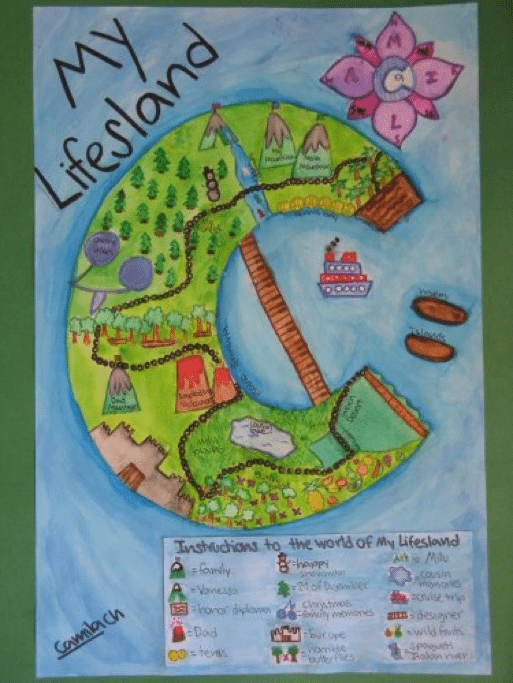
Source: https://goo.gl/BcSRWZ
Students in Amy Getty’s sixth grade class start off the year by creating maps of islands that illustrate their lives. They first fill out an autobiographical survey and then use their creativity and knowledge of landforms and symbols to design their maps.
7. Play a global game of hide and seek.
Mystery Class, which Christina Michelle plans to try with her students next year, includes fun geography lessons that help kids understand longitude and latitude while learning about continents, countries, and cities around the world. Kids start by gathering data about Earth, based on latitude, longitude, and seasonal changes in sunlight. Then they investigate clues and compare their data, narrowing down their search to find 10 secret sites around the globe.
8. Map character journeys.
When teaching about literary settings, Jessica Brookes suggests having kids create a map of the main character’s travels throughout the story, including a title, scale, key, and compass rose. Reading specialist Melody Arnett says a simple way she incorporates geography is by helping her class figure out where in the world each book they read takes place. “Sometimes it’s obvious … ‘This is a folktale from Thailand,’” she says, “and sometimes we infer based on clues from the story.”
9. Study the geography of ocean currents.
In this activity, students use maps to learn about ocean currents, research case studies of ocean spills, and discuss the role of oceanographers.
10. Engage fast finishers.
Here’s an idea to keep your fast finishers actively learning after they’ve finished their classwork. Runa Zaman suggests photocopying a stack of blank world maps and asking kids to label them. Students can even receive extra credit or a small prize based on the number of countries they label correctly.
11. Map your classroom.
 Source: Winn Brewer
Source: Winn Brewer
Introduce spatial concepts without ever leaving the classroom. You can practice with familiar places, using this National Geographic activity to help your students understand the world around them—starting with their own classroom.
12. Hold the whole world in your hands.
Play Throw the Globe by tossing a beach-ball-sized inflatable globe around the classroom. When a student catches it, they must tell the class which continent or ocean their right thumb is touching. If they know something about the location, they can also share it with the class.
13. Get to know foods around the world.
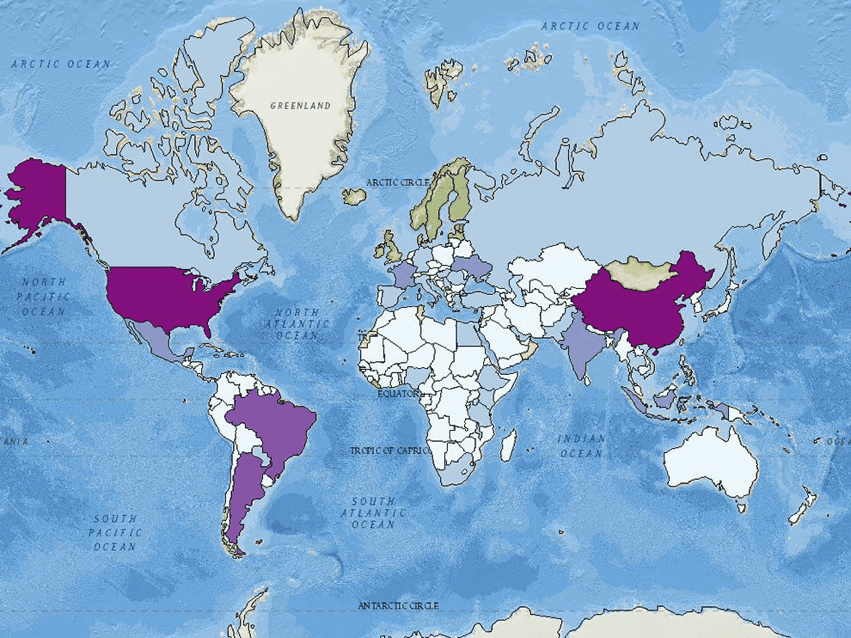
Source: National Geographic
Are your students hungry for knowledge about the world’s food production? National Geographic’s MapMaker Interactive layers show leading crop production by country on an interactive map. Challenge your students to think about what the map doesn’t show—like where crops may grow in the future or where the crops travel when they are exported.
